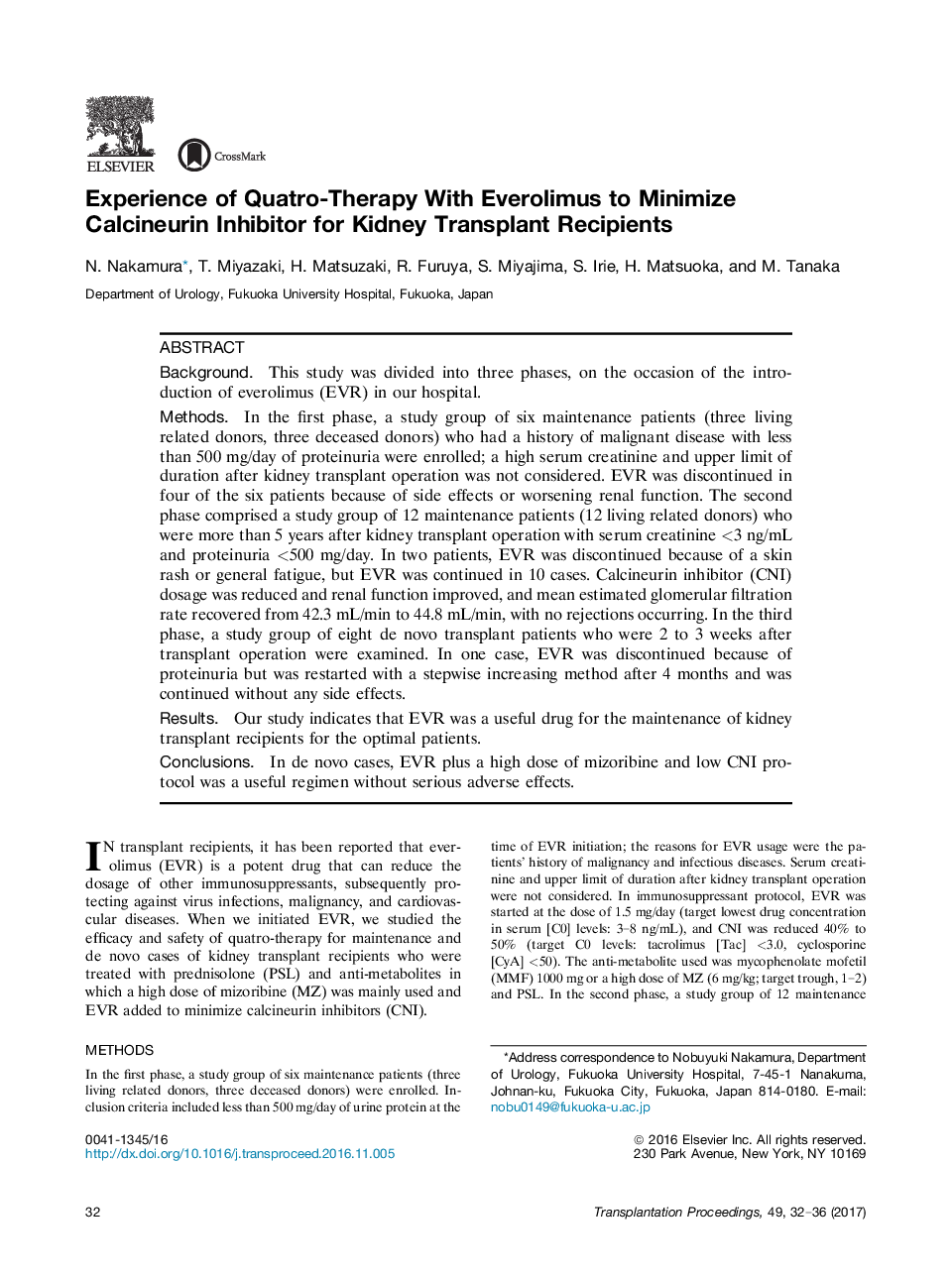| Article ID | Journal | Published Year | Pages | File Type |
|---|---|---|---|---|
| 5729282 | Transplantation Proceedings | 2017 | 5 Pages |
BackgroundThis study was divided into three phases, on the occasion of the introduction of everolimus (EVR) in our hospital.MethodsIn the first phase, a study group of six maintenance patients (three living related donors, three deceased donors) who had a history of malignant disease with less than 500 mg/day of proteinuria were enrolled; a high serum creatinine and upper limit of duration after kidney transplant operation was not considered. EVR was discontinued in four of the six patients because of side effects or worsening renal function. The second phase comprised a study group of 12 maintenance patients (12 living related donors) who were more than 5 years after kidney transplant operation with serum creatinine <3 ng/mL and proteinuria <500 mg/day. In two patients, EVR was discontinued because of a skin rash or general fatigue, but EVR was continued in 10 cases. Calcineurin inhibitor (CNI) dosage was reduced and renal function improved, and mean estimated glomerular filtration rate recovered from 42.3 mL/min to 44.8 mL/min, with no rejections occurring. In the third phase, a study group of eight de novo transplant patients who were 2 to 3 weeks after transplant operation were examined. In one case, EVR was discontinued because of proteinuria but was restarted with a stepwise increasing method after 4 months and was continued without any side effects.ResultsOur study indicates that EVR was a useful drug for the maintenance of kidney transplant recipients for the optimal patients.ConclusionsIn de novo cases, EVR plus a high dose of mizoribine and low CNI protocol was a useful regimen without serious adverse effects.
